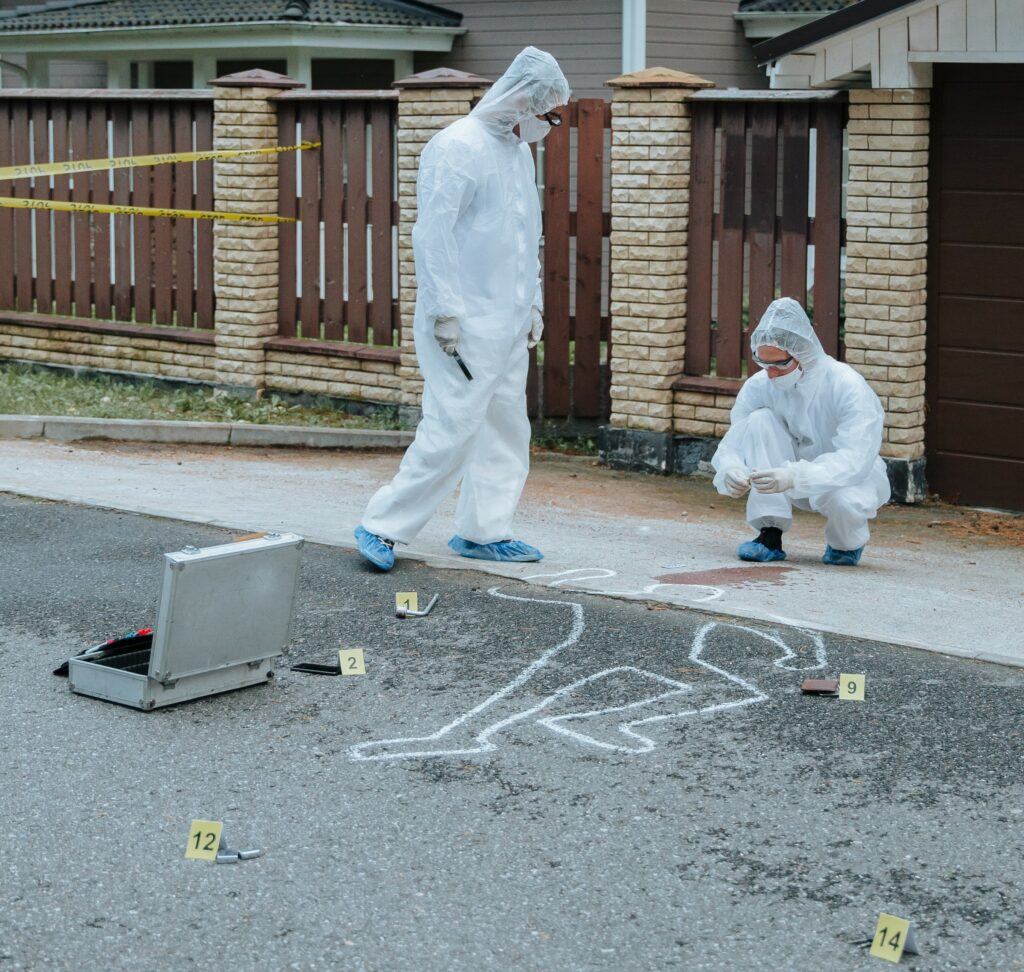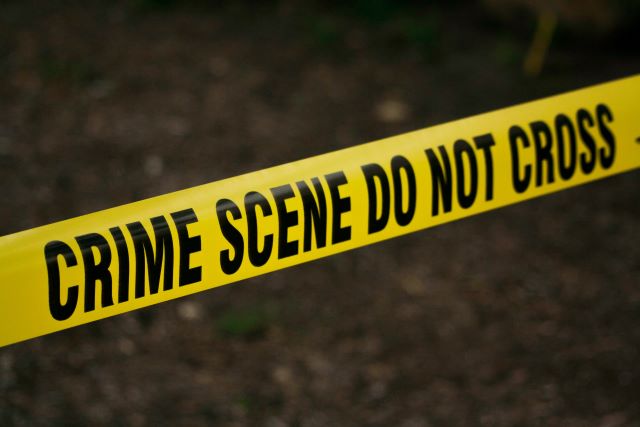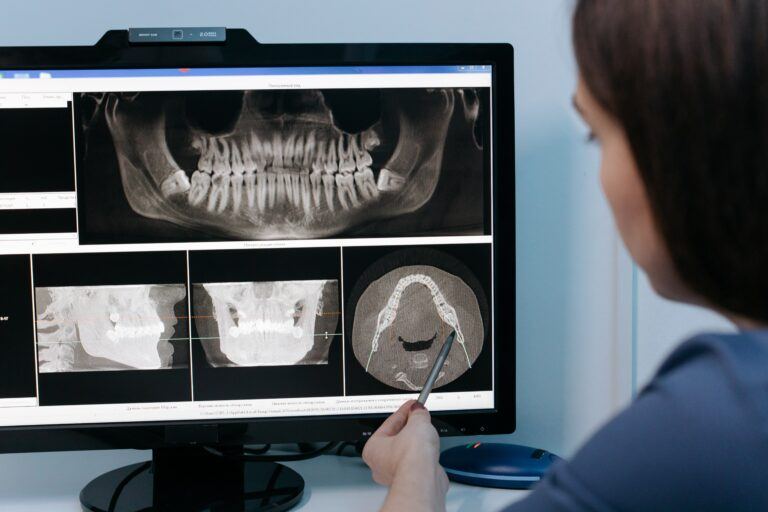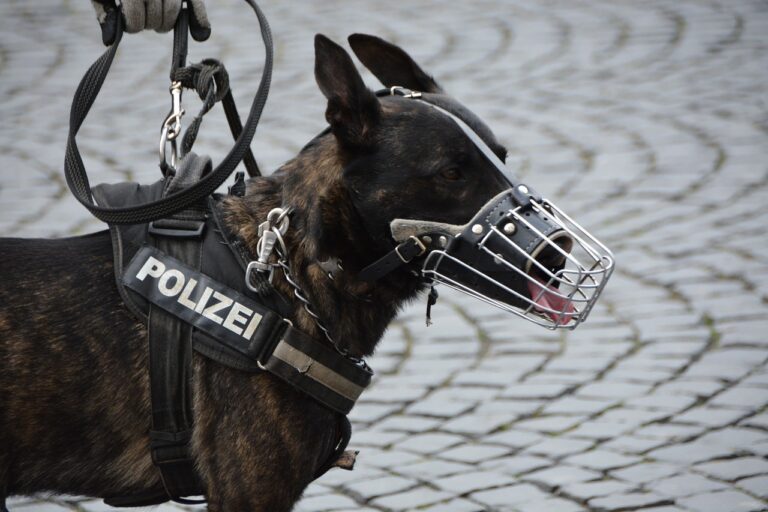10 Crucial Mistakes To Avoid at a Forensic Science Crime Scene
Forensic science crime scene is the backbone of solving crimes, helping us unveil the truth from the most perplexing mysteries. Whether it’s a burglary, murder, or any other criminal case, forensic experts play a pivotal role in piecing together the puzzle. However, even the most skilled professionals can falter due to common mistakes that can occur during investigations.
In this article, we will dive into the seven most prevalent mistakes that can jeopardize the integrity of a crime scene investigation. By understanding and avoiding these blunders, we can ensure that the forensic science process remains robust, reliable, and effective.
Forensic Science Crime Scene: Inadequate Documentation
When it comes to a “Forensic Science Crime Scene” investigation, documentation is the cornerstone of success. It serves as a detailed roadmap, guiding investigators and forensic experts through the network of evidence and clues.
Inadequate documentation is a common pitfall. It occurs when essential information about the crime scene is not properly recorded. These omissions can be the difference between a successful investigation and one that leaves critical questions unanswered.
The consequences of lacking comprehensive documentation can be dire. Investigative teams might miss crucial details, leading to erroneous conclusions or failed prosecutions. Incomplete records about the location and condition of evidence can hinder the entire process, leaving room for doubt and mistakes.
To steer clear of this mistake, meticulous documentation is key. Every aspect of the crime scene, from the placement of evidence to the environmental conditions, should be documented. The who, what, when, and where need to be clearly recorded to maintain the integrity of the investigation.
In the next section, we will explore the perils of evidence contamination and the steps necessary to prevent it in “Forensic Science Crime Scene” investigations.
Forensic Science Crime Scene: Contamination of Evidence
In the world of “Forensic Science Crime Scene” investigations, evidence contamination is like a ticking time bomb that can wreak havoc on the integrity of an investigation. This mistake occurs when the evidence is tainted or altered inadvertently, often due to a lack of proper precautions and handling.
Contamination can stem from various sources, from the investigators themselves to the environment in which the evidence is found. Even something as seemingly insignificant as not wearing gloves can introduce DNA or fingerprints where they shouldn’t be. It’s like adding an extra layer of complexity to an already intricate puzzle.
The consequences of evidence contamination can be catastrophic. When evidence is tainted, it becomes nearly impossible to trust the results of forensic analysis. Jurors and judges may become skeptical, and the entire case could be jeopardized.
To prevent this mistake, stringent measures must be taken. All individuals involved in the crime scene investigation must be trained in proper evidence-handling techniques. This includes wearing protective gear, such as gloves and masks, to minimize the risk of introducing foreign substances.
By addressing this mistake and taking appropriate precautions, we can ensure that the evidence gathered from a “Forensic Science Crime Scene” is as untainted and trustworthy as possible. In the following sections, we’ll explore other common mistakes and strategies to avoid them in the world of forensic science.
Forensic Science Crime Scene: Mishandling of Evidence
“Forensic Science Crime Scene” investigations heavily rely on the evidence collected, making proper handling crucial. Mishandling evidence can have dire consequences, compromising the integrity and trustworthiness of an investigation.
This mistake often occurs when evidence is not treated with the care it deserves. Improper packaging, storage, or even transportation can lead to contamination, damage, or loss of evidence. Think of it as handling a fragile artifact; any mishap can shatter its significance.
The implications of mishandling evidence are severe. It can lead to evidence becoming inadmissible in court, or worse, result in the guilty going free due to a lack of convincing proof. For a successful “Forensic Science Crime Scene” investigation, maintaining evidence integrity is paramount.
To prevent this mistake, investigators must be well-trained in evidence-handling protocols. They should use appropriate tools, materials, and techniques to preserve evidence properly. Each piece of evidence should be meticulously documented, labeled, and stored securely to maintain the chain of custody.
In the upcoming sections, we’ll continue our journey through the common mistakes in forensic science crime scene investigations and explore how to navigate them effectively.

Forensic Science Crime Scene: Inadequate Preservation of Biological Evidence
“Forensic Science Crime Scene” investigations often hinge on biological evidence like DNA, bodily fluids, and hair samples. These minute clues contain a wealth of information, but they are exceptionally delicate and prone to degradation if not preserved correctly.
Inadequate preservation of biological evidence is a prevalent mistake that can result in vital clues disintegrating into obscurity. DNA, in particular, is a molecular code that can unlock the secrets of a crime. However, if it’s not preserved correctly, its integrity can be compromised, rendering it useless in the investigation.
The implications of failing to preserve biological evidence are significant. It can hinder the investigation, making it challenging to establish a link between the suspect and the crime scene. This can ultimately lead to an unsolved case or even a wrongful conviction.
To avoid this mistake, special attention must be paid to biological evidence. Proper storage techniques, such as refrigeration or freezing, are crucial to slow down degradation. It’s also essential to use sterile tools to prevent contamination. Every effort should be made to safeguard the genetic code that can hold the answers to the investigation.
As we continue our exploration of common mistakes in forensic science crime scene investigations, we’ll get into the necessity of securing the crime scene, which is fundamental to the success of the entire process.
Failure to Secure the Crime Scene
Securing the crime scene is the first step in maintaining the integrity of an investigation. Failing to do so can lead to the tampering, contamination, or destruction of evidence, undermining the entire process.
For example, picture the crime scene as a delicate jigsaw puzzle, and each piece of evidence as a part of that puzzle. If the scene is not secured, it’s like letting a gust of wind scatter the pieces, making it almost impossible to put them back together accurately.
The consequences of a compromised crime scene are far-reaching. Tampered evidence can make it challenging to pinpoint the perpetrator or reconstruct the events that transpired. It can also raise doubts about the authenticity of the findings.
To prevent this mistake, law enforcement and forensic experts must work together to secure the area. The scene should be isolated, and access should be restricted to only authorized personnel. Therefore, every person who enters the crime scene should be documented with their full name and rank. This prevents anyone from unintentionally or intentionally disturbing the evidence.
As we proceed, we’ll continue our journey through the most common mistakes made at forensic science crime scenes, shedding light on their repercussions and how to evade them effectively.
Forensic Science Crime Scene: Insufficient Training and Expertise
In the world of “Forensic Science Crime Scene” investigations, having the right expertise and training is essential. Insufficiently trained investigators can inadvertently make critical mistakes, misinterpreting evidence, mishandling it, or failing to recognize its importance.
This mistake often arises when investigators are not adequately prepared for the challenges they will face at crime scenes. A lack of expertise can lead to missed vital details and incorrect conclusions. For instance, not recognizing a seemingly unimportant clue could mean the difference between solving a case and it remaining unsolved.
The implications of this mistake are profound. Errors made due to lack of proficiency can lead to wrongful convictions, unsolved cases, or guilty parties remaining at large. To ensure the success of a “Forensic Science Crime Scene” investigation, ongoing training and certification for all involved personnel are paramount.
To avoid this mistake, investigators and forensic experts must engage in regular training programs to stay updated on the latest techniques and advancements in forensic science. Furthermore, certifications should be obtained and maintained to validate their expertise in the field.
In the subsequent section, we’ll explore the critical importance of coordination and communication among all parties involved in forensic science crime scene investigations, and how a lack of it can lead to errors.
Forensic Science Crime Scene: Inadequate Communication
In the realm of “Forensic Science Crime Scene” investigations, effective coordination and communication are the linchpins that hold the investigative process together. When these crucial elements are lacking, mistakes can easily creep in, and the entire investigation can be compromised.
This mistake often occurs when investigators, law enforcement, and forensic experts fail to work together seamlessly. Lack of communication can result in the loss of crucial information or worse, the mishandling of evidence due to misunderstandings.
The consequences of this mistake can be grave. Miscommunication can lead to errors in interpreting evidence, overlooking critical details, or even duplicating efforts unnecessarily. A well-coordinated team ensures that the investigation flows smoothly, and all aspects are covered efficiently.
To prevent this mistake, fostering a culture of teamwork is essential. Effective communication channels must be established among all parties involved. Regular meetings, briefings, and debriefings should be conducted to ensure that everyone is on the same page and that information is shared promptly and accurately.
By addressing these seven common mistakes, we can strengthen the foundation of “Forensic Science Crime Scene” investigations and improve the accuracy and reliability of their outcomes.

Forensic Science Crime Scene: Failing to Interview Witnesses
In the world of “Forensic Science Crime Scene” investigations, the role of witnesses cannot be underestimated. Failing to interview witnesses is a mistake that can have a profound impact on the investigation’s success.
This mistake occurs when investigators overlook the value of firsthand accounts from individuals who were present at or near the crime scene. Witnesses can provide invaluable insights into what transpired, the people involved, and other critical details.
The consequences of neglecting witness interviews are substantial. Without their input, the investigation might rely solely on physical evidence, which, as we’ve seen, can be compromised or misinterpreted. Witness statements can corroborate or clarify the evidence and even lead investigators in the right direction.
To prevent this mistake, law enforcement and forensic experts must prioritize witness interviews. All available witnesses should be interviewed promptly and thoroughly. Their statements should be documented and cross-referenced with physical evidence to build a comprehensive understanding of the crime.
Failing to interview witnesses can lead to missed opportunities, potential misjudgments, and prolonged investigations. It’s crucial to remember that witnesses often hold the missing pieces of the puzzle, and their perspectives can be the key to solving the most challenging cases.
As we move towards the conclusion, we’ll reiterate the significance of avoiding these eight common mistakes and emphasize the need for precise and error-free forensic science crime scene investigations.
Forensic Science Crime Scene: Failing to Consider Digital Evidence
In the ever-evolving landscape of Crime Scene investigations, failing to consider digital evidence is a mistake that’s gaining prominence in the digital age. With electronic devices and online data becoming integral parts of our daily lives, digital evidence is playing an increasingly pivotal role in solving crimes.
This mistake unfolds when investigators neglect to explore the digital footprint left by both victims and perpetrators. As a result, critical evidence that could shed light on the crime may go unnoticed. Digital devices and online accounts can contain invaluable information such as text messages, emails, call logs, social media interactions, and geolocation data. Overlooking these digital breadcrumbs can lead to an incomplete picture of the crime.
The implications of disregarding digital evidence are far-reaching. Investigators may miss out on the ability to trace the suspect’s movements, establish timelines, or uncover communication that’s essential to understanding the context of the crime. By not considering digital evidence, the investigation may suffer from significant blind spots.
To avoid this mistake, investigators must be equipped with the training and expertise required to collect and preserve digital evidence correctly. This includes not only securing physical devices but also retrieving data from online platforms, which often demands technical proficiency.
In a world where technology is ever-advancing, incorporating digital evidence into “Forensic Science Crime Scene” investigations is paramount. It holds the potential to provide a deeper understanding of criminal activities, motives, and relationships.
Focusing on One Suspect Too Early: The Peril of Tunnel Vision
In the world of “Forensic Science Crime Scene” investigations, maintaining an open mind and considering all possibilities is paramount. One common but critical mistake is focusing on one suspect or theory too early in the investigation, a phenomenon known as tunnel vision.
This mistake often transpires when investigators prematurely lock onto a single suspect or theory based on initial information or assumptions. While it’s natural to seek a swift resolution, this fixation can lead to the neglect of other leads and important evidence.
The consequences of this tunnel vision are profound. Vital evidence may be overlooked, alternative theories disregarded, and other potential suspects neglected. In the pursuit of one avenue, investigators might miss out on critical clues that could exonerate or incriminate individuals.
To steer clear of this mistake, investigators must approach each case with an unbiased perspective. They should avoid forming conclusions too early and be willing to adapt their theories as new evidence emerges. This requires patience and thorough examination of all available information, no matter how minor it may seem.
An open-minded and comprehensive approach to investigations is the foundation of a successful forensic science process. It enables investigators to follow the evidence, rather than attempting to fit it into preconceived notions. In the final conclusion, we’ll underscore the importance of avoiding tunnel vision and adhering to a meticulous and unbiased approach in forensic science.
Conclusion
In the world of crime-solving, “Forensic Science Crime Scene” investigations are the pillars upon which justice stands. These investigations often lead to the unraveling of complex cases and bring perpetrators to justice. Yet, these critical processes are vulnerable to a series of common mistakes that can compromise their integrity.
We’ve explored ten such mistakes, ranging from inadequate documentation and evidence contamination to mishandling of evidence, insufficient preservation of biological evidence, and failure to secure the crime scene.
Additionally, we discussed the importance of well-trained investigators and the value of communication and coordination among the investigative team. Lastly, we examined the significant oversight of not interviewing witnesses.
Each of these mistakes has the potential to mar the accuracy of the investigative process, impede justice, and even lead to the wrongful conviction or acquittal of individuals. However, by understanding these pitfalls and actively working to avoid them, we can enhance the precision and reliability of forensic science crime scene investigations.
In conclusion, the field of forensic science demands precision and accuracy, where no detail is too small to be overlooked. By addressing these eight common mistakes and embracing best practices, forensic science can continue to be a beacon of truth and justice, shining light on even the darkest of mysteries.
Thank you for reading and please leave comments below. To read about Mastering the Collection of Evidence, click here. In addition, to read about the types of evidence used for court, click here.
Also, to read extensive product reviews of 2023 visit my other website.
Willie McCain







